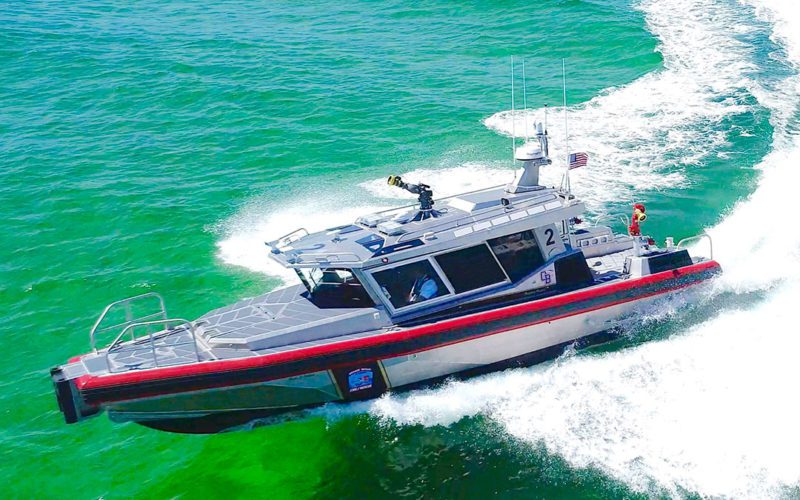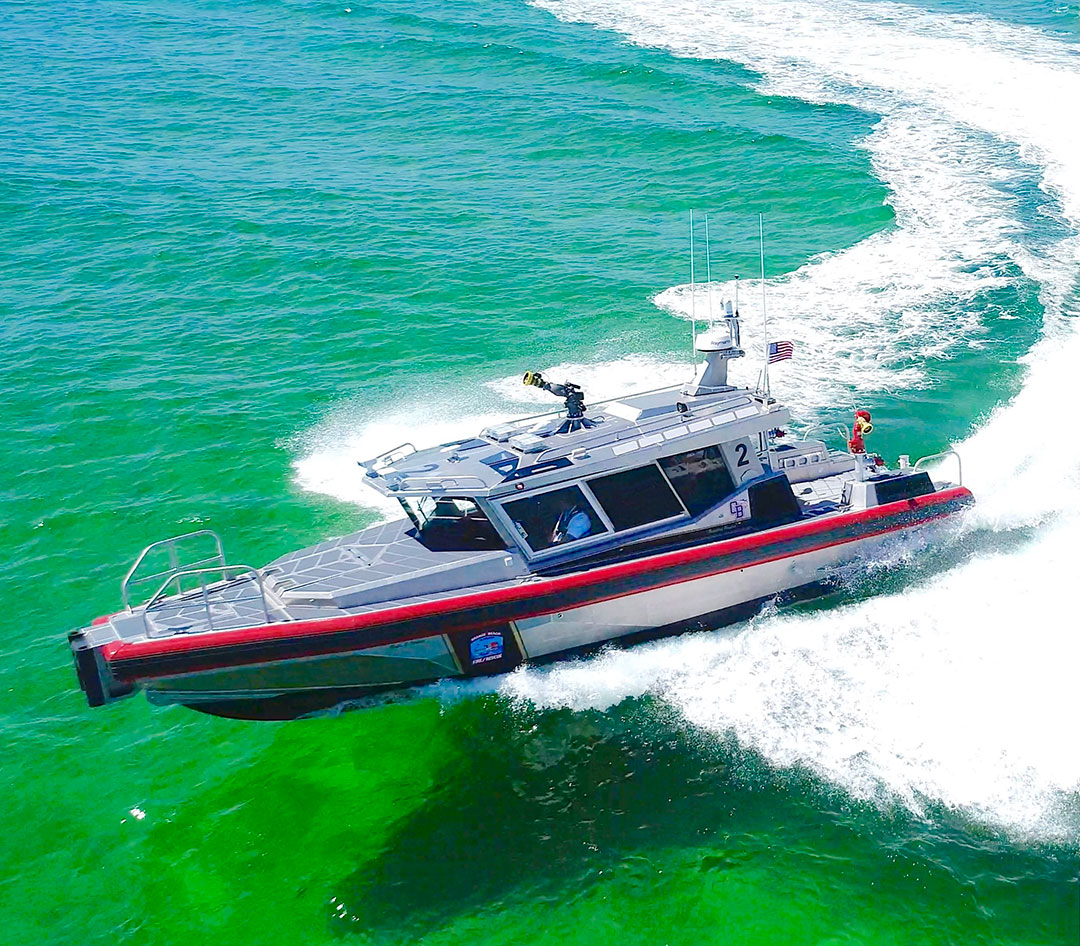
Almost three years ago, a massive fire destroyed 27 condominiums in Perdido Beach, Fla. Firefighters from across the region helped fight the flames, including those from Orange Beach just across the Alabama state line.
Bruce Nelson, a battalion chief for Orange Beach Fire Rescue, said the event demonstrated the value of a steady water supply. It also influenced how the department outfitted Rufus E. Walker, its new fireboat.
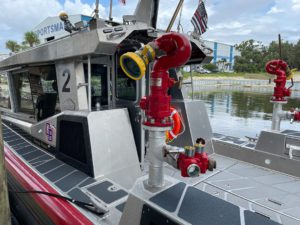
“Early on, they had a water supply issue,” Nelson recalled of that August 2019 fire. “The Pensacola fireboat came out and supplied water to one of the trucks. We can do that same thing with this boat.”
“Obviously, we want decent speed out of a boat, but we are not expecting it to do 70 mph either,” he added. “Its pumping capabilities give us the huge advantage of having an unlimited water supply for whatever we have going on around here.”
Rufus E. Walker, named for a legendary Orange Beach charter boat captain, is the first 38 Defiant NXT model fireboat built by Metal Shark. The 43-foot aluminum monohull builds off the company’s existing 38 Defiant platform used by many fire departments, the U.S. Coast Guard and the U.S. Navy, among others.
Although Orange Beach has only about 6,500 year-round residents, its population swells in the spring and summer. Marinas and beachfront condo towers fill with tourists, creating numerous challenges for the city’s emergency personnel, who frequently respond to injuries in the surf or on recreational vessels out on the water. The department also trains for chemical spills and fires involving the commercial barge traffic that moves through the region on the Intracoastal Waterway.

Rufus E. Walker replaces the department’s 31-year-old Boston Whaler, which was driven by twin Yamaha outboard engines and had a single fire pump that delivered 150 gallons per minute. It served the department well, but limited how personnel could respond to incidents in open water.
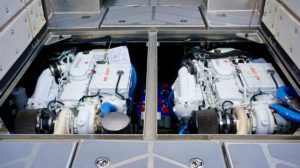
“We don’t have the same limitations from a response standpoint … and (the new fireboat) has a great dive platform and open stern so we can run different kinds of rescue operations,” Nelson said.
Firefighters responding to a marine emergency must first travel to Rufus E. Walker, which docks about a mile from the Gulf of Mexico. At least three firefighter-paramedics with advanced life support training respond to each incident. The vessel also has a patient bench like that found on an ambulance to provide treatment while heading back to shore.
The enclosed vessel is powered by twin 550-hp Cummins engines paired with HamiltonJet waterjets that can push the vessel past 40 mph. The highly maneuverable jets allow Rufus E. Walker to operate in water as shallow as 30 inches, letting responders nose up onto beaches or sandbars for quicker patient transfers.

“You can crab-walk the boat sideways, you can pivot on its axis and pretty much maneuver it however you want it to move,” Nelson said of the HamiltonJet blueArrow controls. “When we get up to speed we can move over to the steering wheel and drive it like a traditional boat.”
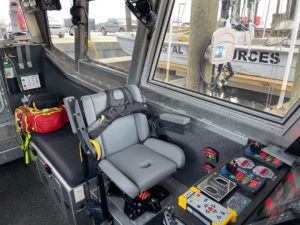
Firefighting equipment aboard the vessel consists of two 1,500-gpm Darley fire pumps driven off each Cummins main engine via power take-offs. Those pumps pull water from dedicated sea chests within the hull. The Darley units supply water to Elkhart Brass Copperhead monitors installed aft of the house on the port and starboard sides, and a remote-controlled Elkhart Brass Scorpion EXM monitor on the roof.
The vessel has two handline outlets and a 5-inch Storz hose connection that can supply shoreside fire equipment through the Darley pumps.
Rufus E. Walker is equipped with three Raymarine multifunction touchscreen displays with radar, chartplotter and other capabilities. It also has a FLIR thermal imaging camera mounted on the roof for nighttime rescues and a side-scan sonar system. The pilothouse is equipped with a filtration system that protects its occupants from chemical, biological, radiation and nuclear threats.
“It’s an all-hazard boat for us,” Nelson said. •

